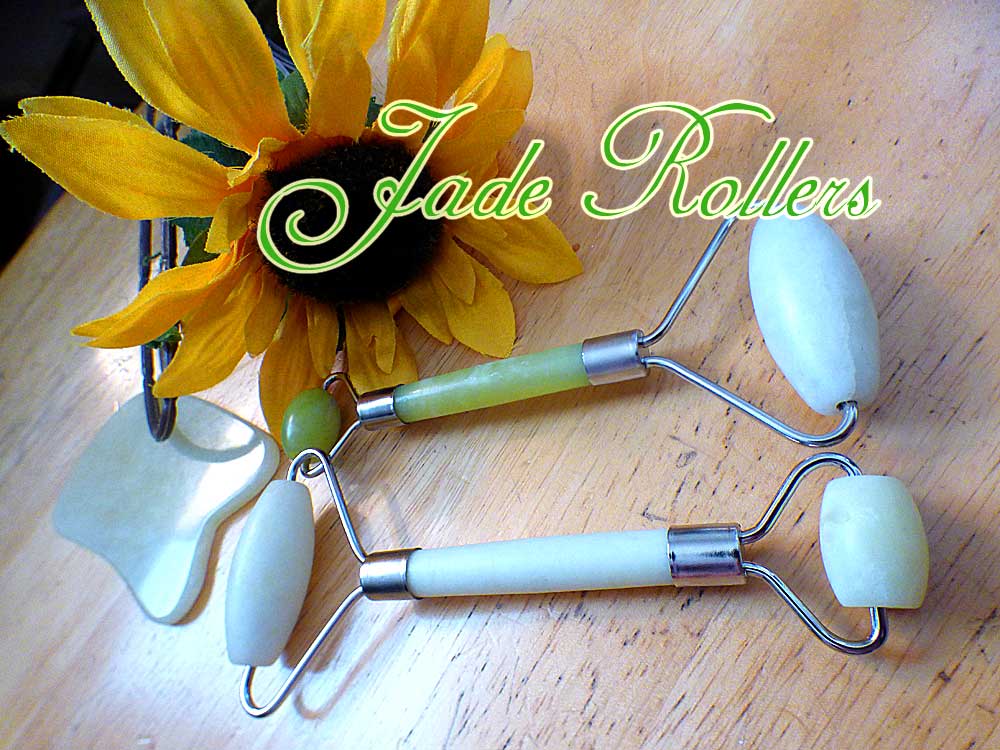
I personally never realized how popular these jade rollers were until I saw them being sold at our favorite organic salad joint. As with anything trendy, I get skeptical. I personally looked into jade roller’s history, use, and efficacy, and I’m sharing with you what I found.
Despite its recent appearance in celebrity magazines, jade rollers, traditionally called gua sha have actually been around since the 7th century in China, over a thousand years ago! As you know, China has gotten a lot of bad reputation in modern times because of their subpar standards with safety protocols, quality control, copyright infringement, among other shoddy commercial practices. We’ve made synonymous the label “made in China” with “toxic.”
Although our caution against anything made in China is not unwise, we do forget how the ancient Chinese created one of the greatest civilizations which the world has greatly benefited from. We’ve learned that the ancient peoples were not as primitive as we had always thought—they were at least as advanced as us today, or even more. When I heard about jade roller’s ancient origins, I immediately took an interest.

What is a Jade Roller?
Jade rollers were traditionally used by Chinese royalty as a beauty tool. The Chinese, like others in the East, believe in the importance of clearing energy called “chi” for health and vitality. By using a jade roller made for the face, you loosen up this energy that would sometimes get stuck in certain parts of the face due to our poor facial habits.
This beauty tool became popular in the West in more recent times when the efficacy of this tool for anti-ageing was recognized. They didn’t have to believe in chi or energy work to see the difference to the face before and after use of the jade roller, and that explains why it quickly became widely accepted and sold all over the West.
How Does It Work?
And how do jade rollers work, in non-energy speak?
Without overcomplicating the answer to this, jade rollers work by freeing the lympathic liquids that may be stuck in certain areas of your face due to facial habits. These habits include the times when you unconsciously make different “faces” when you feel or express different emotions or even when you rest your face against your hand, arm, or pillow in one spot frequently, causing an uneven distribution of fluid.
Just like a regular body massage or exercising, applying pressure to the face with a roller gets blood flowing to areas of the face and so “breathes in” oxygen to the cells. Proper circulation is required for a well functioning body, and that is why movement is very necessary both outside and in.
How Do I Use a Jade Roller?
I know it’s difficult to add one more thing to your beauty regimen, so don’t feel that you really need to follow the instructions that come with your jade roller to a tee. Think of them as guidelines. If you work out at the gym for a few minutes a day, it’s better than nothing—that is if you do it safely without hurting yourself or being counterproductive. With the jade roller, it’s pretty self-explanatory and very easy to know if you’re hurting yourself with it!
All you really need to remember is that you need to roll it on your face from the inside towards the outside. If you don’t remember this, just think of how you brush your hair. You don’t brush towards your face, you brush away. With a jade roller, you roll from your upper eyebrows to your temples, from the edges of your nose towards your ears.
Here’s a video showing how to use a jade roller:
Where to Buy
Lots of health and beauty stores carry jade rollers now, but I got mine from Nature’s Secret on Amazon. There are ones out there that are made with plastic, and you will want to avoid those for the BPA and dyes. There are also ones made with glass infused with the color green. These non-jade “jade” rollers come cheaper, but they don’t provide all the benefits that come with choosing the natural jade stone with all its energetic healing properties.

Thanks so much, Diana! See you in the groups!!
LikeLike